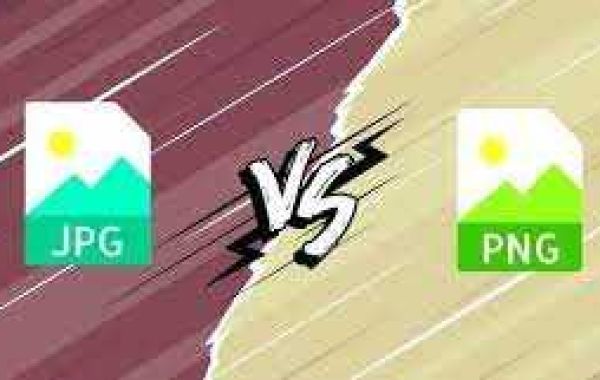How to Optimize Website Speed with PNG to JPG Conversion
Are you tired of slow loading websites? Do you find yourself clicking away from a site that takes too long to load? Website speed is a crucial factor in user experience, and as such, it should be a top priority for anyone who owns or manages a website. One of the main culprits in slow website speed is large image files, particularly those in PNG format.
But fear not! There’s a simple solution to this problem: converting PNG to JPG. In this article, we’ll explore the advantages of using JPG files for website images and give you step-by-step instructions on how to optimize your website speed by converting your PNG images. By the end of this article, you’ll have the tools and knowledge necessary to improve your website’s performance and provide users with a better overall experience.
Understanding PNG and JPG file formats
In order to optimize website speed with PNG to JPG conversion, it’s important to understand the differences between these two file formats. PNG (Portable Network Graphics) is a lossless format that supports transparency and high-quality images. It’s often used for graphics and logos on websites. On the other hand, JPG (Joint Photographic Experts Group) is a lossy format that compresses images, resulting in smaller file sizes but lower image quality. It’s commonly used for photographs and complex images on websites. It’s important to consider the type of image being used when deciding between PNG and JPG. While PNG provides higher quality graphics with transparent backgrounds, it can result in larger file sizes which can slow down website loading times. In contrast, JPG offers smaller files sizes but at the expense of image quality. By understanding these differences, you can make an informed decision when converting between the two formats to optimize website speed without sacrificing too much image quality.
Advantages of Converting PNG to JPG for Website Speed
Converting PNG to JPG is one of the most effective ways to optimize your website speed. PNG files are larger than JPG files, which means they take longer to load. By converting your website's PNG images to JPG format, you can significantly reduce the file size and improve the overall loading time of your website.
In addition, converting PNG images to JPG can also help reduce bandwidth usage and save storage space on your server. This is especially important if you have a large number of images on your website or if you're working with limited resources.
Overall, converting PNG images to JPG format can be a simple yet powerful way to improve the speed and performance of your website, resulting in a better user experience and higher search engine rankings.
Importance of website speed for user experience
Website speed is a critical factor in providing excellent user experience. Research shows that users expect a website to load in under three seconds, and they are likely to leave if it takes longer than that. Slow-loading websites can lead to frustration and even impact your website's bounce rate, which can hurt your SEO efforts.
Moreover, website speed is crucial for mobile users who make up more than half of all global web traffic. Mobile devices typically have slower internet connection speeds, smaller screens and less processing power than desktop computers. As such, slow loading times are even more apparent on mobile devices.
To offer an optimal user experience, you need to optimize your website's performance, including reducing load times through various techniques such as image compression using PNG to JPG conversion.
Common Mistakes while Converting PNG to JPG
Converting images from PNG to JPG can be a great way to reduce the size of your image files and increase website speed. However, it's important to take care when converting as there are several common mistakes that can be made.
One of the most common mistakes is using an incorrect quality setting. When converting an image, it's important to find the right balance between file size and image quality. A low-quality setting will result in a smaller file size but also a lower-quality image, while a high-quality setting will result in a larger file size but better image quality. Make sure you experiment with different settings until you find the one that works best for your needs.
Another mistake is not optimizing the compressed image further. While converting from PNG to JPG is an effective way of reducing file sizes, you should also consider further optimizing these files using compression tools and techniques for even greater performance gains.
Step-by-Step Guide to Optimize Website Speed through PNG to JPG Conversion
Now that you understand the importance of optimizing website speed and the advantages of converting PNG to JPG, it's time to get into the nitty-gritty of how to actually do it. Follow these step-by-step instructions to ensure your images are optimized for website speed:
- Identify images that need conversion: Start by identifying all the images on your website that are in PNG format. These are the images that will benefit most from conversion to JPG.
- Determine appropriate quality settings: Once you have identified the images, determine the appropriate quality settings for each image. Use a high-quality setting if there is a lot of detail in the image, and a lower setting if it is a simpler image.
- Select an image optimization tool: There are many tools available for converting PNG files to JPG format and optimizing them for website use. Choose one that suits your needs and budget.
- Open the tool and import your PNG file: Open up your chosen optimization tool and select the PNG file you wish to convert.
- Select desired output format: Choose JPG as your output format from within your optimization tool options.
- Select desired compression level: Select an appropriate compression level depending on your specific needs. Remember: higher compression can result in more pixelation or loss of detail.
- Create optimized image: Once you've
Tools and techniques to convert PNG to JPG
Converting PNG files to JPG is a simple process that can be done with a variety of tools. One of the easiest ways to do this is by using an online converter like Zamzar or CloudConvert. These services allow you to upload your PNG files and convert them into JPG format quickly.
If you prefer desktop software, programs like Adobe Photoshop, GIMP, or Paint.NET can also be used for converting PNGs to JPGs. With these software, you can control the quality settings and compression level for your images. Keep in mind that higher compression levels will result in smaller file sizes but lower image quality.
When selecting a tool for converting PNGs to JPGs, choose one that offers batch processing capabilities if you have many images on your website. This way, you can save time by converting multiple files at once instead of doing it manually one by one.
Best practices for optimizing images on your website
While converting PNG to JPG is an effective way to optimize website speed, it is equally important to follow best practices for optimizing all images on your website. One of the most important things you can do is to compress and resize the images before uploading them. Large image files can slow down your website significantly, so it's essential to find a balance between quality and file size.
Another best practice is to use responsive images that adjust according to the user's device and screen size. This not only improves user experience but also reduces the amount of data that needs to be downloaded, resulting in faster load times. Additionally, consider using lazy loading techniques that only load images when they are needed, rather than all at once. This can significantly reduce page load times.
Measuring Website Speed and Performance
Once you have optimized your website images, it is important to measure the website speed and performance to ensure that they are loading quickly and efficiently. There are several free online tools available for this purpose, such as Google PageSpeed Insights, GTmetrix, and Pingdom. These tools will provide you with valuable insights into how your website is performing in terms of speed, page size, load times and other key metrics.
In addition to using these tools, it is also a good idea to regularly monitor the website speed using Google Analytics. By monitoring the website’s user behavior data such as bounce rates and average session duration before and after optimizing images on your site can help you determine if users are enjoying improved experiences or not.
Advanced techniques for optimizing website speed through image compression
While the standard PNG to JPG conversion can improve your website speed, advanced image compression techniques can take it a step further for a faster and smoother user experience. One such technique is lossless compression, which reduces the image size without compromising its quality. By removing redundant data and compressing it in a more efficient manner, lossless compression minimizes the file size while retaining sharpness and color accuracy.
Another technique is dynamic imaging, which delivers images based on the user's device, screen size, and network connection. This approach ensures that every user receives images that are optimized for their specific device and connection speed, improving page load times and reducing bounce rates. Additionally, progressive rendering loads an initial low-resolution version of an image first while gradually improving its quality as more data is loaded.
Conclusion
In conclusion, optimizing website speed is crucial for providing a positive user experience and achieving high search engine rankings. By convert PNG to JPG , you can significantly reduce file size while maintaining image quality. It's important to use the right tools and techniques for image compression and to follow best practices for optimizing website images. With these strategies in place, your website will load faster and attract more visitors, leading to greater engagement and conversion rates. Don't underestimate the impact of website speed on your business success - take action today to optimize your site for peak performance!








